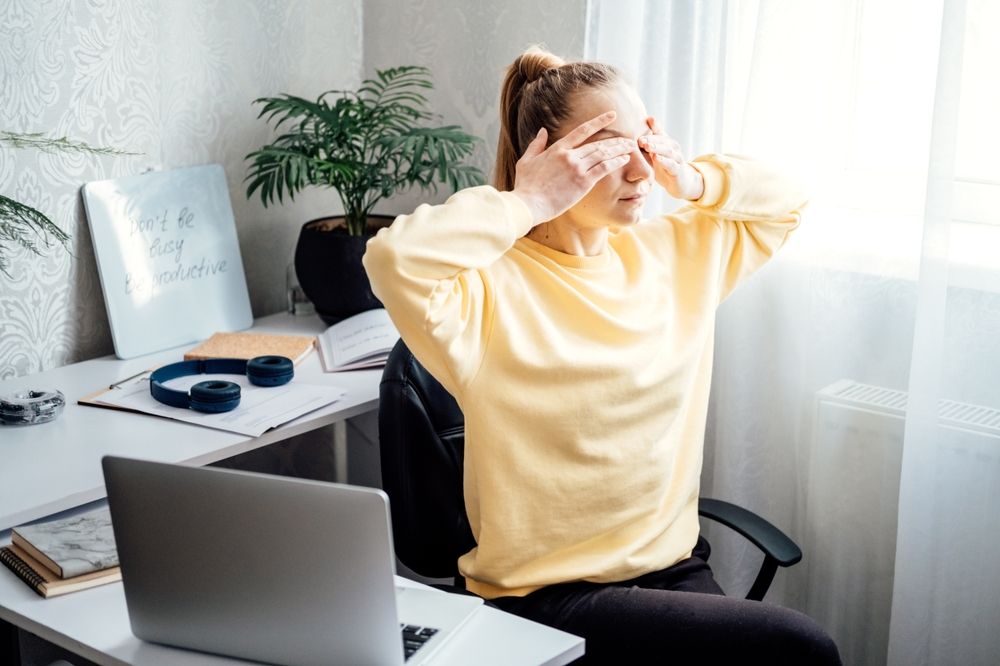As screen use becomes an integral part of modern life, from remote work and digital entertainment to mobile communication, more patients are reporting persistent dry eye symptoms. At Colorado Eye Clinic in Greenwood Village, Dr. Abed Namavari has seen a rise in patients whose ocular discomfort is directly tied to extended digital exposure. While many associate dry eye with aging or environmental factors, digital eye strain is becoming an equally relevant contributor—especially in urban areas like Denver, where digital lifestyles are the norm.
Prolonged screen time disrupts natural blinking patterns, reducing blink frequency and contributing to faster tear evaporation. The eyes remain partially open and dry out, creating the gritty, burning, or tired feeling so many people experience after hours at a desk or scrolling on a phone. Unlike traditional dry eye linked to meibomian gland dysfunction or autoimmune conditions, screen-induced dry eye often presents subtly but worsens without proactive measures.
Understanding the Impact of Screen Time on Eye Health
When you stare at a screen, whether it’s a computer, tablet, or phone, your blink rate can drop by up to 60%. A normal blink rate is about 15–20 blinks per minute, but during screen use, it often plummets to 5–7 blinks. Each blink spreads tears across the surface of your eyes, nourishing the cornea and maintaining comfort. Without adequate blinking, the eye’s protective tear film breaks down, leading to dryness, visual fluctuations, and even redness or stinging sensations.
Additionally, focusing on a fixed object at a close distance (like a monitor) requires sustained contraction of the eye’s internal muscles, particularly the ciliary muscle. This muscle controls the shape of the lens and is essential for near vision. Constant contraction without relaxation can lead to accommodative spasms—manifesting as blurred vision, eye pain, or fatigue. Over time, these symptoms can compound, interfering with productivity and quality of life.
Why Dry Eye Deserves More Than Just Artificial Tears
While artificial tears can offer temporary relief, they do not address the root of the problem. They also often require frequent reapplication, especially in screen-heavy users. Dr. Namavari emphasizes that addressing digital dry eye effectively involves lifestyle modification and therapeutic strategies that support the eye’s natural function. One powerful and often overlooked intervention is eye exercises.
Ophthalmology now supports a broader approach to dry eye care—particularly for cases related to behavior, such as screen use. Exercises that stimulate blinking, encourage tear film regeneration, and reduce muscle fatigue can be instrumental in long-term symptom management. These techniques don’t replace clinical treatment in moderate to severe cases, but they can significantly improve comfort and reduce reliance on eye drops for those in the early or mild stages of digital dry eye.
Eye Exercises That Relieve Digital Eye Strain
Incorporating structured eye exercises into your daily routine can counteract many of the negative effects of prolonged screen exposure. These exercises are designed to restore blink frequency, relax strained muscles, and stimulate tear production naturally.
Here are some recommended exercises:
- The 20-20-20 Rule: Every 20 minutes, look at something 20 feet away for 20 seconds. This encourages your eye muscles to relax and helps you remember to blink.
- Blink Training: Set a timer for five minutes and consciously blink every four seconds. Try to complete full, gentle blinks (not squints), which help restore the tear film.
- Palming: Rub your hands together to warm them and gently cup them over your closed eyes without pressure. This reduces light input and helps the eye muscles relax.
- Figure Eight Eye Rolls: Trace the shape of a sideways figure eight with your eyes. This exercise enhances flexibility in the eye muscles and promotes better circulation.
Performing these exercises at least twice a day can make a noticeable difference. If symptoms persist or worsen, however, it’s crucial to schedule a professional evaluation. At Colorado Eye Clinic, patients receive comprehensive assessments to determine whether their dry eye is related to environmental, behavioral, or medical factors.
The Role of Professional Care in Managing Dry Eye
Even with consistent exercise and lifestyle modifications, some cases of dry eye require medical intervention. Dr. Namavari offers a full spectrum of diagnostic and treatment options, from tear film analysis and gland imaging to in-office therapies. Depending on the underlying cause, treatments may include prescription eye drops, thermal pulsation therapy, or punctal plugs.
What sets Colorado Eye Clinic apart is its tailored approach to care. Patients in Greenwood Village and the greater Denver area benefit from personalized regimens that factor in digital habits, environmental triggers, and systemic health. Screen-related dry eye is often multi-faceted, and addressing it successfully means going beyond general advice or over-the-counter products. Dr. Namavari collaborates with each patient to develop strategies that fit into their daily routine while offering meaningful relief.
Creating a Screen-Smart Lifestyle
Reducing dry eye symptoms also requires changes in how you interact with screens. Creating a visually ergonomic environment and building eye-friendly habits can reinforce the benefits of exercise and medical treatment. Lighting, screen position, and hydration are all small adjustments that can support eye health.
Use a matte screen filter to reduce glare, position your monitor at eye level to avoid straining your eyelids, and make sure your room lighting is balanced—not too dim or overly bright. Keeping a humidifier nearby can prevent the air from drying out your eyes, especially in Denver’s dry climate. You should also drink water consistently throughout the day; dehydration can worsen tear film quality.
Patients who work from home or engage in long gaming or study sessions should consider blue light filters and anti-reflective lenses. These can help reduce the stimulation of the retina, which may contribute to eye fatigue. Combining these habits with regular exercise and ophthalmic evaluation ensures a proactive defense against digital dry eye.
Supporting Eye Health Through Routine Checkups
Regular eye exams are vital not just for detecting vision problems but also for evaluating tear production and ocular surface health. For patients who experience intermittent dry eye, even if symptoms seem minor, it’s worth having a baseline exam. Early intervention helps prevent complications such as corneal damage, chronic inflammation, or long-term vision disruption.
At Colorado Eye Clinic, Dr. Namavari uses advanced diagnostic tools to assess tear quantity and quality. This helps differentiate between evaporative dry eye (common with screens) and aqueous deficiency, which requires different treatment. More importantly, it allows for customized recommendations that align with each patient’s lifestyle and visual demands.
Patients throughout Greenwood Village and the greater Denver region trust Colorado Eye Clinic for both routine and advanced ophthalmology care. Whether your dry eye stems from screen time, allergies, or another cause, Dr. Namavari can help you preserve eye comfort and clarity.
A Long-Term Plan for Visual Wellness
Dry eye doesn’t have to be the price of a digital lifestyle. With the right combination of eye exercises, environmental adjustments, and clinical guidance, most patients can manage or reverse screen-related discomfort. The key is consistency and professional partnership.
Dr. Namavari and the team at Colorado Eye Clinic remain committed to helping patients navigate the demands of modern screen use without sacrificing their eye health. If you live in Greenwood Village, Denver, or surrounding areas, and you’re struggling with dry, tired eyes, it’s time to take the next step toward comfort and clarity.
Resources
Sheppard, J. D., et al. (2020). A Comprehensive Review of the Burden of Dry Eye Disease in the United States. Clinical Ophthalmology
Portello, J. K., et al. (2012). Computer-Related Visual Symptoms in Office Workers. Ophthalmic and Physiological Optics
Tsubota, K., & Nakamori, K. (1993). Dry Eye and Decreased Blinking During Video Display Terminal Use. American Journal of Ophthalmology

